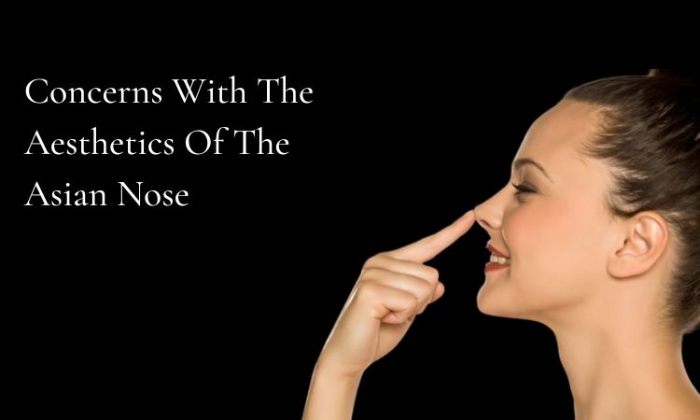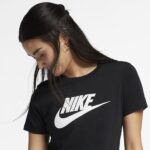The shape of the nose is of great importance in the Asian community, as most Asians have thinner noses and more prominent facial features. Although an Asian nose is considered aesthetic, a large nose can be problematic because it evokes a lot of negative judgments and feelings. Some people may feel contempt for how others perceive them, or even others may hate them simply because of the size of their noses.
Table of Contents
1. The low deck (rear)
The first feature to address with the Asian nose is the low nose bridge (there are many other things to consider, such as that of a Caucasian. To manage this feature, a patient may undergo back augmentation surgery, increasing the bridge). Of the nose by surgical reconstruction. An Asian rhinoplasty is also a viable option. It is important to note that even if the patient undergoes both procedures, the nose will be slightly raised, unlike Caucasian noses, which are usually much higher than Asian noses. This surgery can effectively correct this trait and help patients feel more confident about their physical appearance.
2. Dorsal (sagittal) view versus ventral (horizontal) view
The second feature that needs to be spoken about with the Asian nose is the dorsal view versus the ventral view, which is the main difference between an Asian nose and a Caucasian nose. In general, Asians have slimmer noses than Caucasians because of their smaller nasal bones and bridge, making a more expansive dorsal view more critical than an anterior view. Therefore, patients should consider their dorsal and ventral views when undergoing rhinoplasty. The tip should be wide enough to compensate for the bridge, which is generally smaller in rear view than Caucasians.
3. The tip (sternum)
For Asian noses, the tip is also crucial because it should not be too small or large, depending on the size. The angle should be narrow enough to balance the bridge of the nose and wide enough to offset the bridge of the nose. The nostrils should be uncurled and have a sufficient number of vesicles. At this point, you may be wondering what causes a broader back view or a broader toe in Asians. There are two possible explanations for this. First, patients may have too much soft tissue in their noses and need a wider tip. Second, a broader back view by people with a long nose.
4. The bulbous tip
A bulbous cob is usually careful by a cob that droops downward and does not spread. This feature is commonly seen in patients with large noses and can cause the nose to appear more prominent than desired. A hard-smooth Gore-Tex or AlloDerm finish can lighten the tip and reduce its appearance. A full rhinoplasty can also fix the bulbous end and other issues.
5. The Underrated TIP
An undershot tip is also standard in Asians with big noses. In this case, the information falls below the bridge and is usually close to the nostrils. The only way to solve this problem is to reconstruct the nasal tip and the bone. The information looks more natural because it is not under the bridge and appears more petite than usual. Rhinoplasty can correct this by changing the projection angle to the nostrils.
6. The nasal bone
A prominent and short nasal bridge generally characterizes a long nose. the bridge of the nose can be so long that it presses directly into the bulging forehead or even into the scalp. That can be secured using various techniques, including revision surgery, nasal bump reduction, and septoplasty.
7. Flared toe
The sparkler is another feature that has cultural significance within the Asian community. The bigger the flared lace, the more feminine and pretty a woman appears according to her culture. In addition, the smaller the flared tip, the more masculine a man appears and the more conspicuous he is. A rhinoplasty to address this trait provides the necessary information and helps balance your Asian nose.
8. Flared Nose
A flared nose can be seen in people with large beaks and is best from the side. In this case, the bridge widens at the base, giving the patient an unnatural appearance. This characteristic can be corrected using a rhinoplasty narrowing the base. It is also beneficial to reshape the tip and bridge of the nose to allow for a more natural appearance.
9. The prominent nose
A protruding nose generally applies to people with large beaks. It can be seen in children and adults and usually has two shapes: a small bump and a large bump. The feature is usually noticeable because the tip is too far from the centre of the face; as a result, it emerges. By reducing or reconstructing the bones of the nose, rhinoplasty can correct this flaw.
10. The short nose
The typical sign of a blunt nose is that the nose isn’t long enough to balance the nose bridge. The flat nose bridge some Asians have can be another trait of this category. Rhinoplasty can change this characteristic by either lengthening the bones or narrowing them. It improves the naturalness and beauty of the nose.
Conclusion
One must understand the anatomy of the Asian nose to get an idea of what to expect during rhinoplasty. You must consider your dorsal, ventral, and posterior views and other factors. After completing your rhinoplasty, you will have a beautiful Asian nose that looks natural and can complement your frame.
Also Read:Easy Night Skincare Routine For Clear Skin
Also read:15 Beautiful Modern Acrylic Nail Ideas To Try In 2022


![[ pii_email_c1646d6cd617ef1be6ab ]](https://www.fashionblogpage.com/wp-content/uploads/2021/10/outlook-4-150x150.jpg)




